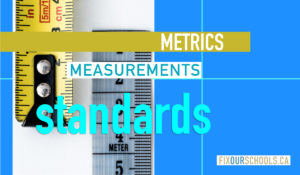Today, we are grateful to have Stanton Wong, President of RESET (www.reset.build/) share his professional views on the criticality of using data to inform good decision-making, and the importance of measuring outcomes to gauge success. As we head towards a return to in-person learning in Ontario this September, this seems a good reminder. We absolutely must apply data to inform a safe return to school, and we absolutely must measure outcomes to gauge success.
COVID-19 has certainly highlighted that if we do not have the knowledge and the supporting data, good decision-making is difficult. COVID-19 has also highlighted that when resources are limited, they must be used as effectively and efficiently as possible.
Speaking of ensuring we use our limited resources effectively and efficiently, by now, we should know that the coronavirus is airborne, so we could redirect some resources away from disinfecting everything to instead focus on decreasing the potential of airborne transmission.
One way to decrease airborne transmission is to ensure indoor air quality is optimized, which requires measuring. Given that indoor air quality is constantly fluctuating due to things such as airflow and number of people in a room at any given time, the prospect of measuring air quality effectively can seem daunting. However, there are solutions available and companies that offer standards for data collection in buildings, monitoring devices for continuous measurement, and expertise for understanding indoor quality.
By collecting and measuring air quality data for indoor spaces such as schools, it is possible to understand the indoor air quality in classrooms so that it is optimized for the best learning environment for our kids and for the safest classrooms in terms of airborne viral transmissions. Additional measurements to track the impact of temperature, humidity, PM2.5, and CO2 on the potential of airborne viral transmission in real time is also possible.
Essentially, we cannot manage or optimize what we cannot measure. Therefore, measurements, data, and standards are necessary if we want to make the best decisions possible with the limited resources available to optimize indoor air quality in schools and classrooms. When it comes to measuring the complex issues that arise in built environments, it is important to have robust information delivered with accuracy.
Stanton Wong is the President of RESET (www.reset.build/). RESET is a set of standards and assessment tools & services to develop actionable, long term strategies towards health and sustainability for the built environment. The RESET Air Standard defines the rules and structure for collecting air quality data for indoor spaces by leveraging continuous monitoring. In addition to the RESET Air Standard, RESET has been working on the RESET Viral Index, which could help schools understand and set clear targets for indoor air quality. The RESET Standard provides quality control over data, which leads to improved system analytics, accelerated problem-solving, and informed optimization strategies.

